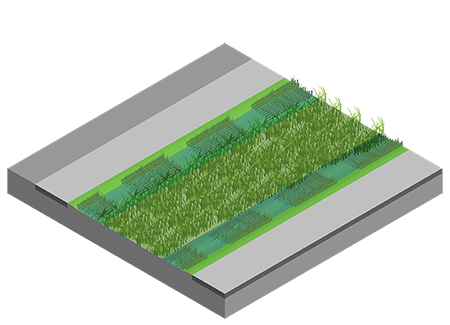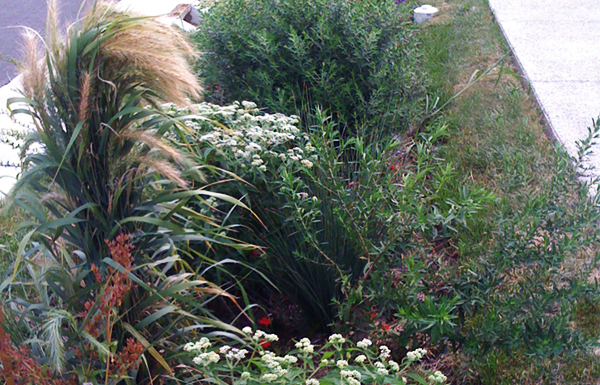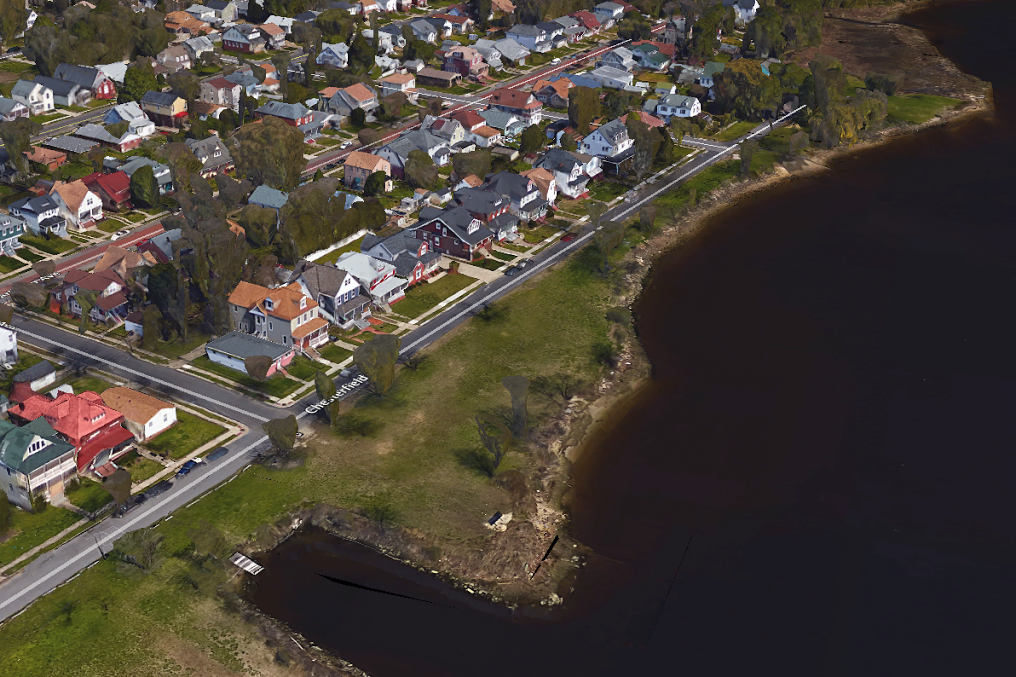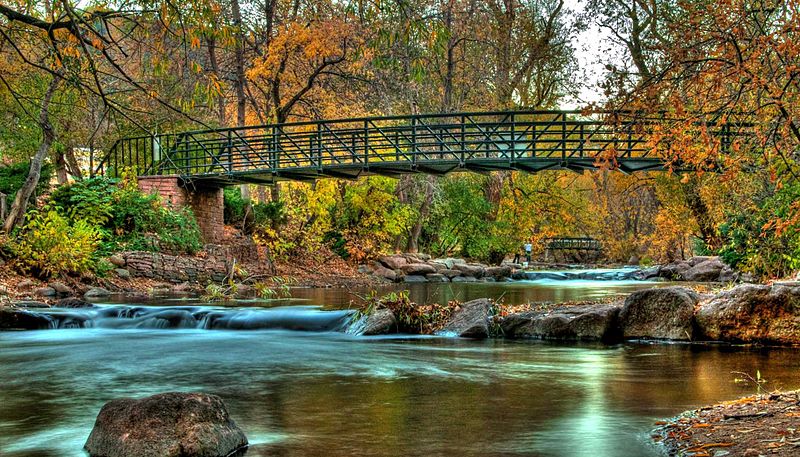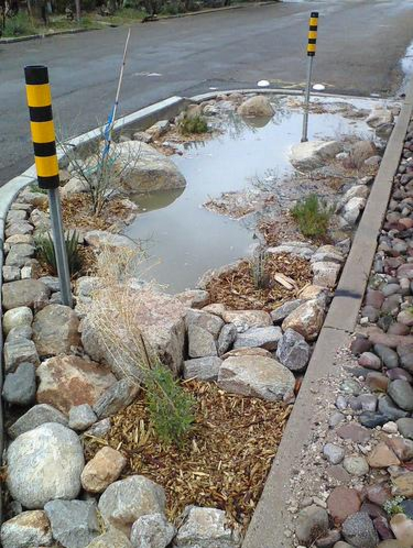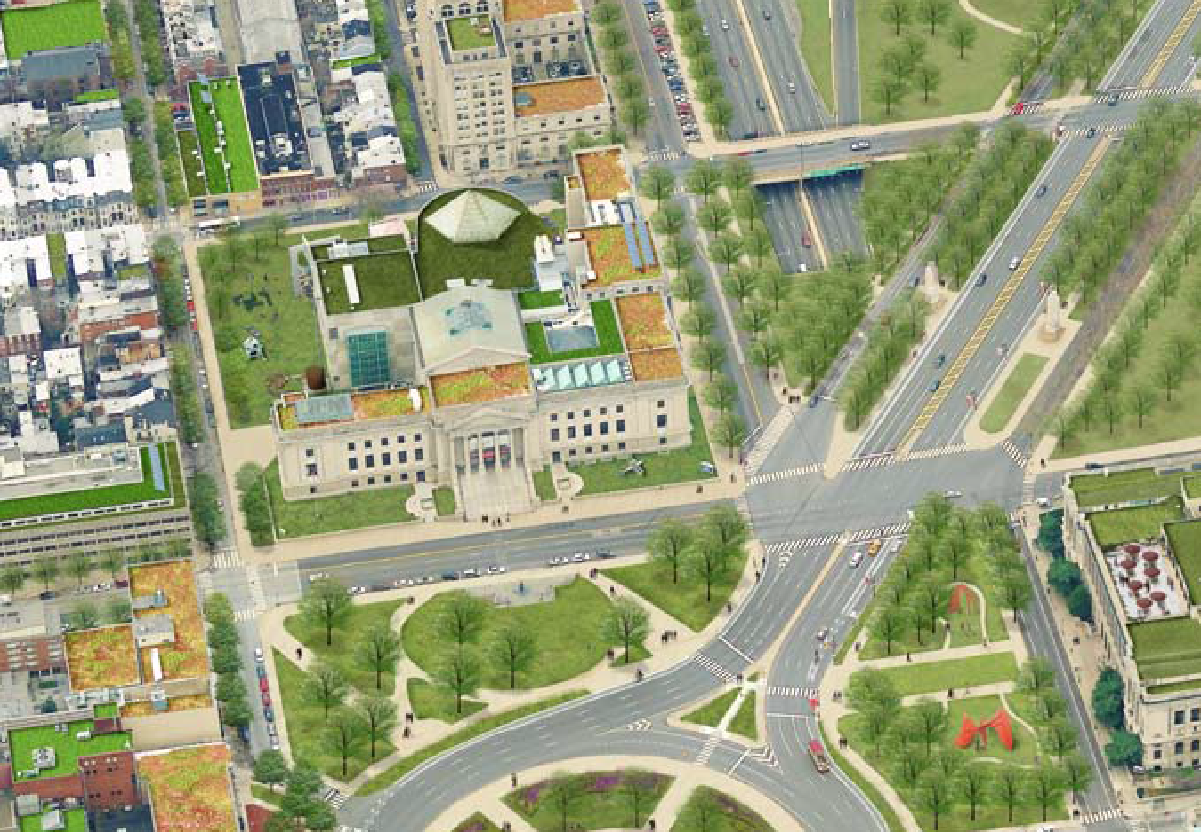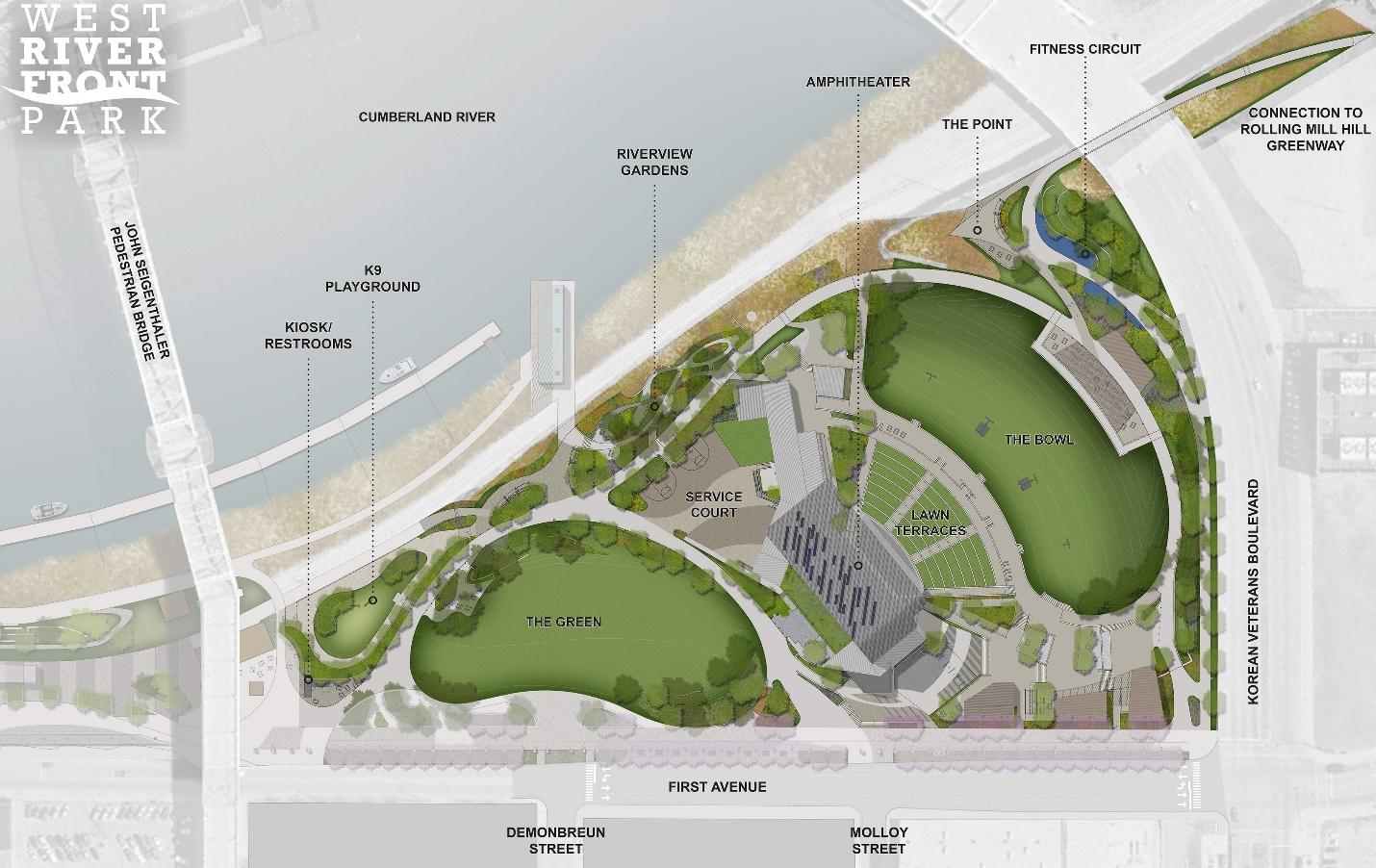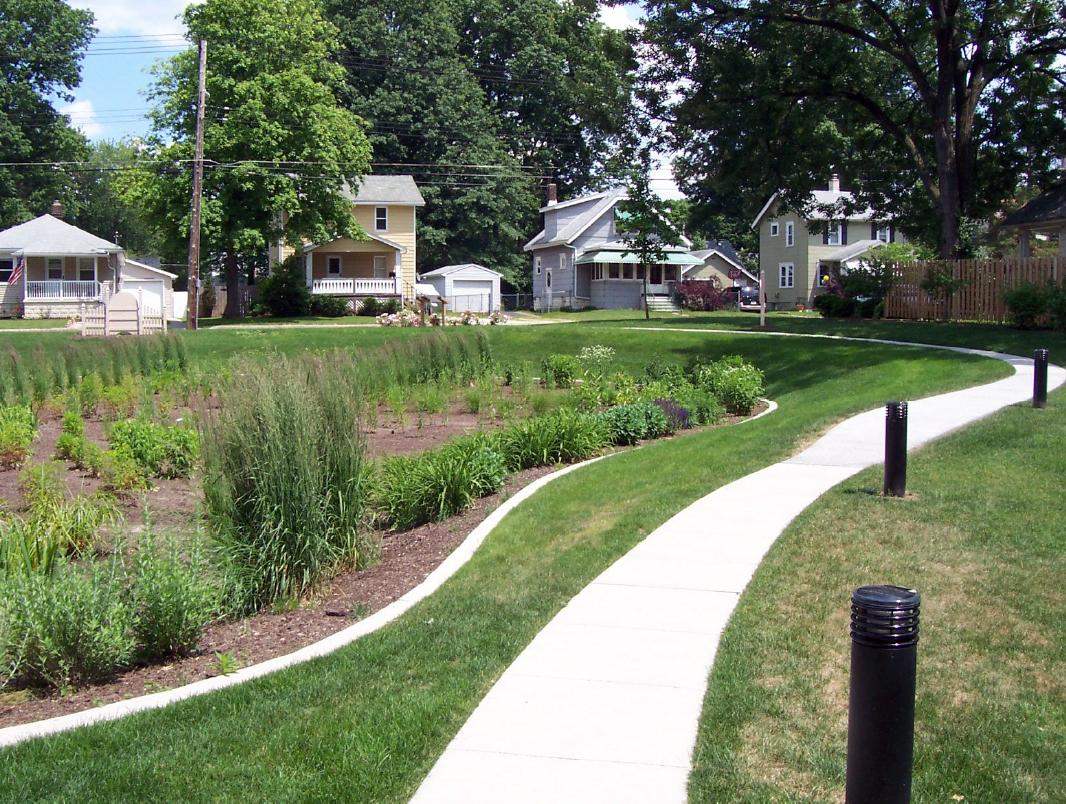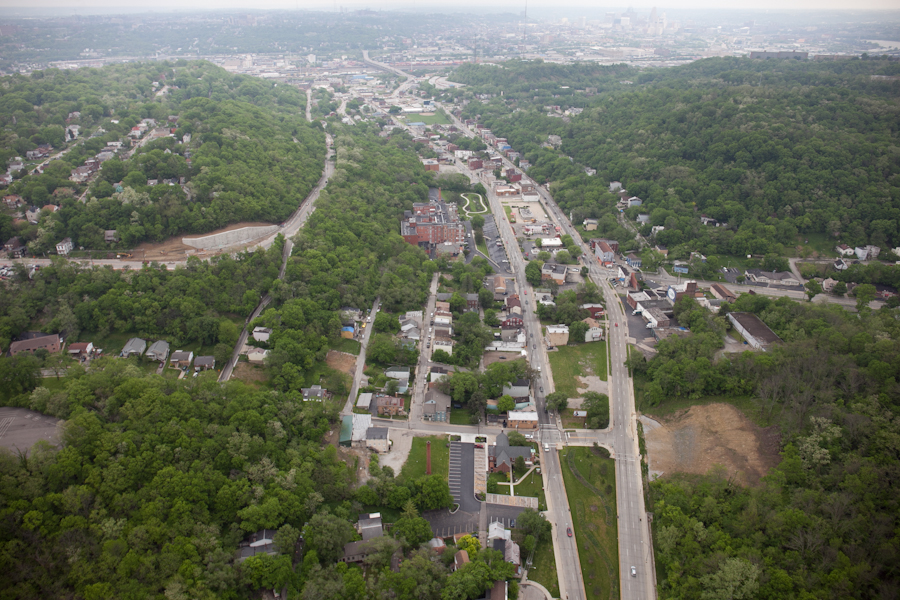Bioswales
Bioswales are an aesthetically-pleasing alternative to concrete gutters and storm sewers, employing vegetated low-lying areas or troughs that use plant materials and specialized soil mixes to treat, absorb, and convey stormwater runoff. They convey stormwater runoff from a roadway or parking lot into a storm sewer system or other retention area. Bioswales provide landscaping that, depending on the plant species chosen, may create habitats for birds, butterflies, and local wildlife.
Bioswales may be effective in any region as they can be tailored to the specific installation location by incorporating native plants. They may be designed to convey any size storm but are most effective in dealing with frequent, small rain events.
Hazard Mitigation
Bioswales are able to absorb runoff from small rain events and treat larger amounts of runoff which are then directed to the larger stormwater management system. In turn this also reduces the overall runoff volume and flow rate which is received by the larger stormwater system.

Siting Considerations
Bioswales are typically linear in nature and tend to be parabolic, trapezoidal or v-shaped. For this reason, bioswales work best when installed in parking lots, along roadways and sidewalks or as an Benhancement to natural or existing drainage swales; however they may be constructed in any location provided there is a mild slope (no greater than five percent). Bioswales are not appropriate in areas with steep or unstable slopes due to the risk of erosion.
Heavy, dense vegetation provides the most effective filtration, making native plants an appropriate choice. Permeable materials (such as gravel) may be added below the channel to increase storage capacity.
Costs
Costs associated with bioswales include both installation costs and annual maintenance costs. Maintenance costs may be reduced through the use of native grasses and plants that are already adapted to the area, requiring less water, no fertilizer, and infrequent mowing. If sediment is not removed periodically, a bioswale may eventually need to be regraded to restore the proper flow.

Co-Benefits of the Strategy
Bioswales have tremendous environmental co-benefits due to their ability to reduce stormwater runoff as well as their ability to treat stormwater. The infiltration process that retains stormwater runoff reduces sediments, turbidity, heavy metals, and pollutant loading. This, in turn, results in additional economic, public health, and social co-benefits through reduced water treatment costs and healthier natural areas for recreational purposes.
Maintenance Considerations
Bioswales do not require excessive maintenance. To ensure that a bioswale continues to operate effectively, it must be inspected periodically to ensure that the channel is adequately vegetated (without woody plant encroachment) and that there are no blockages (either from debris or sedimentation). Inspections should be performed annually and after any major storm event for bare soil, erosion, sediment and debris. Sediment buildup in bioswales does require periodic removal, otherwise regrading of the site may be eventually needed to restore the proper flow.
Care must be taken to ensure that the vegetation is not mowed below the design flow depth. For this reason, property owners and maintenance personnel must be educated about the design and function of the bioswale (along with “do not mow” signage, if appropriate).
Proper maintenance will ensure that a bioswale functions properly, preventing ponding and overgrowth that could result in a negative public perception of the area.

Similar or Complementary Solutions
Bioswales are rarely stand-alone solutions; rather, they are typically part of a larger stormwater management system. Within an individual site, they may be designed to receive runoff from green parking lots, green roofs, or green streets. Large volumes of runoff that cannot be contained by a bioswale are directed into the larger stormwater management system of the area, which may include various types of green recreational areas, wetlands, or other open space.
Additional Resources
The USDA Natural Resouce Conservation Service has developed a flier on bioswales and how they operate.
Fairfax County, Virginia has created a primer on how bioswales work as well as some considerations for design and maintenance.
More information on bioswales and bioretention from the Low Impact Development Center.
